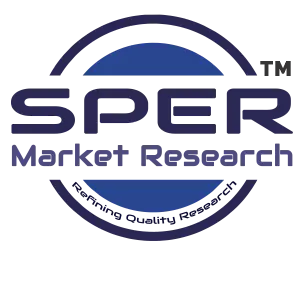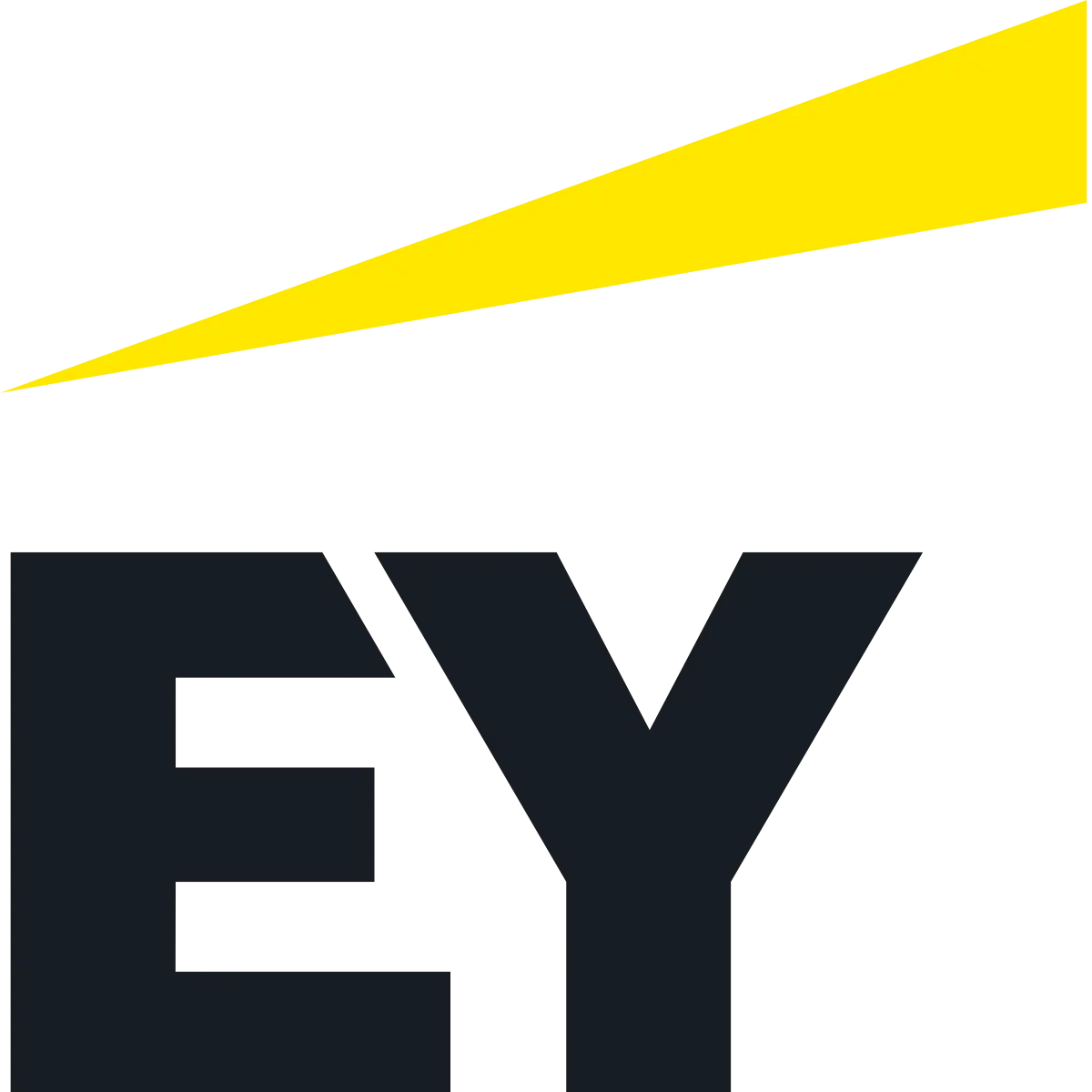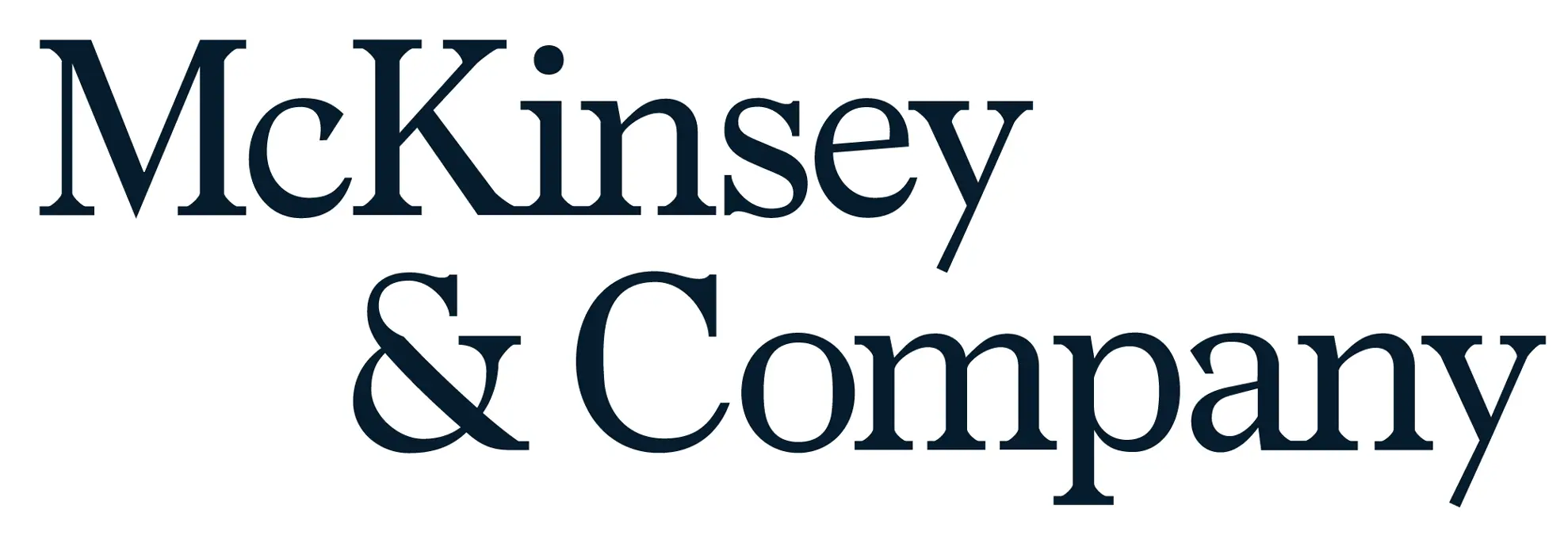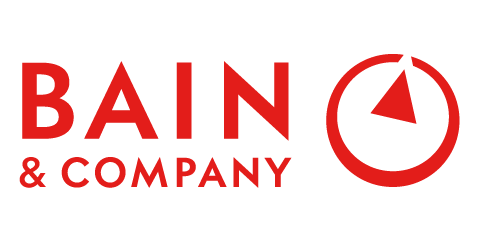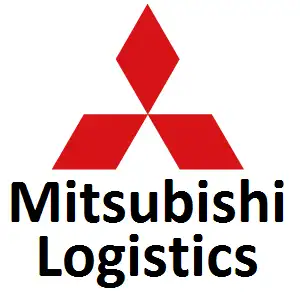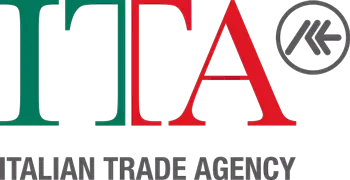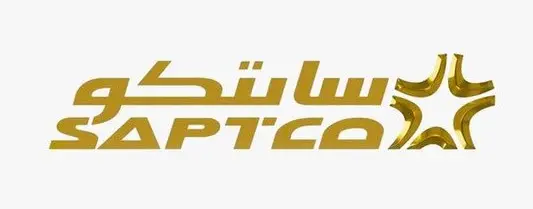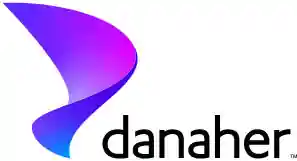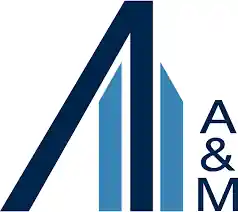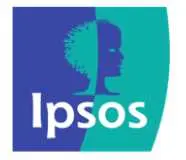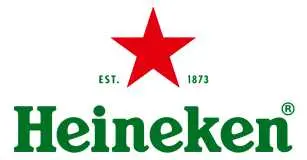
Guillain-Barre Syndrome Market Size, Trends and Forecast 2034
Global Guillain-Barre Syndrome Market Growth, Size, Trends Analysis – By Therapeutics, By Type, By Route of Administration, By Distribution Channel- Regional Outlook, Competitive Strategies and Segment Forecast to 2034
| Published: Jul-2025 | Report ID: HLCA25196 | Pages: 1 - 235 | Formats*: |
| Category : Healthcare | |||
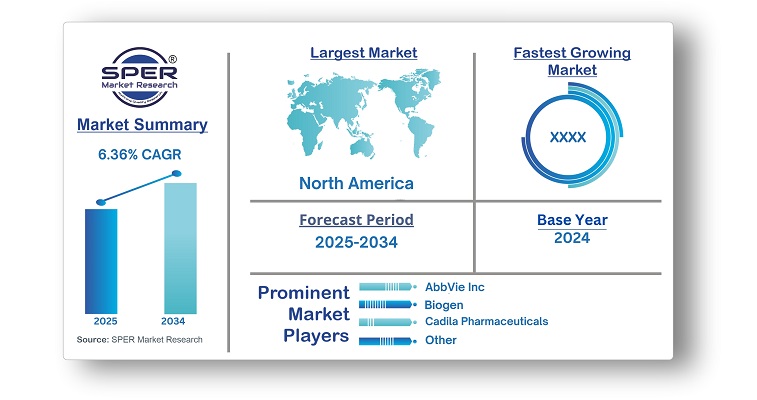
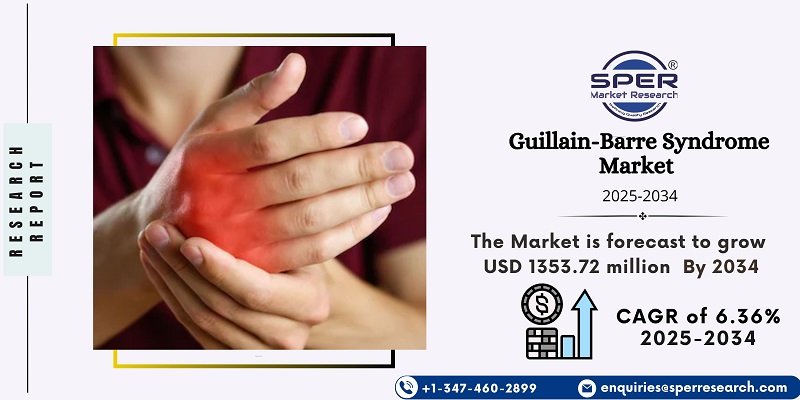
- In December 2024, Hansa Biopharma has commenced a Phase II clinical trial to explore the potential of imlifidase as a treatment option for Guillain-Barré Syndrome (GBS). This study is designed to assess the safety, tolerability, and therapeutic effectiveness of imlifidase when administered alongside the standard care regimen of Intravenous Immunoglobulin (IVIG). By combining imlifidase with IVIG, the trial seeks to determine whether the dual-therapy approach can enhance patient outcomes and accelerate recovery in individuals affected by GBS.
- In October 2023, Annexon Inc. recently received orphan drug designation from the European Medicines Agency (EMA) for its investigational therapy ANX005, intended for the treatment of Guillain-Barré Syndrome (GBS). This designation marks a pivotal step in the company’s strategic efforts to advance ANX005 in regions with limited treatment options for GBS. The regulatory recognition not only underscores the therapeutic potential of ANX005 but also positions Annexon to benefit from regulatory incentives, streamlined development pathways, and enhanced market presence across underserved European markets.
| Report Metric | Details |
| Market size available for years | 2021-2034 |
| Base year considered | 2024 |
| Forecast period | 2025-2034 |
| Segments covered | By Therapeutic, By Type, By Route of Administration, By Distribution Channel |
| Regions covered | North America, Latin America, Asia-Pacific, Europe, and Middle East & Africa |
| Companies Covered | AbbVie Inc, Biogen, Cadila Pharmaceuticals, CSL, F. Hoffmann-La Roche Ltd, GSK plc, Grifols S.A, LGM Pharma, Merck & Co., Inc, Octapharma AG, Pfizer Inc, Takeda Pharmaceutical Company Limited. |
- Global Guillain-Barre Syndrome Market Size (FY’2021-FY’2034)
- Overview of Global Guillain-Barre Syndrome Market
- Segmentation of Global Guillain-Barre Syndrome Market by Therapeutics (Intravenous Immunoglobulin, Plasma Exchange, Others)
- Segmentation of Global Guillain-Barre Syndrome Market by Type (Acute inflammatory demyelinating polyneuropathy, Chronic inflammatory demyelinating polyradiculoneuropathy, Miller fisher syndrome, Acute motor axonal neuropathy, Others)
- Segmentation of Global Guillain-Barre Syndrome Market by Route of Administration (Parenteral, Oral)
- Segmentation of Global Guillain-Barre Syndrome Market by Distribution Channel (Hospital Pharmacies, Retail Pharmacies, Other)
- Statistical Snap of Global Guillain-Barre Syndrome Market
- Expansion Analysis of Global Guillain-Barre Syndrome Market
- Problems and Obstacles in Global Guillain-Barre Syndrome Market
- Competitive Landscape in the Global Guillain-Barre Syndrome Market
- Details on Current Investment in Global Guillain-Barre Syndrome Market
- Competitive Analysis of Global Guillain-Barre Syndrome Market
- Prominent Players in the Global Guillain-Barre Syndrome Market
- SWOT Analysis of Global Guillain-Barre Syndrome Market
- Global Guillain-Barre Syndrome Market Future Outlook and Projections (FY’2025-FY’2034)
- Recommendations from Analyst
- 1.1. Scope of the report
- 1.2. Market segment analysis
- 2.1. Research data source
- 2.1.1. Secondary Data
- 2.1.2. Primary Data
- 2.1.3. SPERs internal database
- 2.1.4. Premium insight from KOLs
- 2.2. Market size estimation
- 2.2.1. Top-down and Bottom-up approach
- 2.3. Data triangulation
- 4.1.Driver, Restraint, Opportunity and Challenges analysis
- 4.1.1.Drivers
- 4.1.2.Restraints
- 4.1.3.Opportunities
- 4.1.4.Challenges
- 5.1.SWOT Analysis
- 5.1.1.Strengths
- 5.1.2.Weaknesses
- 5.1.3.Opportunities
- 5.1.4.Threats
- 5.2. PESTEL Analysis
- 5.2.1. Political Landscape
- 5.2.2. Economic Landscape
- 5.2.3. Social Landscape
- 5.2.4. Technological Landscape
- 5.2.5. Environmental Landscape
- 5.2.6. Legal Landscape
- 5.3. PORTERs Five Forces
- 5.3.1. Bargaining power of suppliers
- 5.3.2. Bargaining power of buyers
- 5.3.3. Threat of Substitute
- 5.3.4. Threat of new entrant
- 5.3.5. Competitive rivalry
- 5.4. Heat Map Analysis
- 6.1. Global Guillain-Barre Syndrome Market Manufacturing Base Distribution, Sales Area, Product Type
- 6.2. Mergers & Acquisitions, Partnerships, Product Launch, and Collaboration in Global Guillain-Barre Syndrome Market
- 7.1. Intravenous Immunoglobulin (IVIG)
- 7.2. Plasma Exchange
- 7.3. Others
- 8.1. Acute inflammatory demyelinating polyneuropathy (AIDP)
- 8.2. Chronic inflammatory demyelinating polyradiculoneuropathy (CIDP)
- 8.3. Miller fisher syndrome (MFS)
- 8.4. Acute motor axonal neuropathy (AMAN)
- 8.5. Others
- 9.1. Parenteral
- 9.2. Oral
- 10.1. Hospital Pharmacy
- 10.2. Retail Pharmacy
- 10.3. Others
- 11.1. Global Guillain-Barre Syndrome Market Size and Market Share
- 12.1. Asia-Pacific
- 12.1.1. Australia
- 12.1.2. China
- 12.1.3. India
- 12.1.4. Japan
- 12.1.5. South Korea
- 12.1.6. Rest of Asia-Pacific
- 12.2. Europe
- 12.2.1. France
- 12.2.2. Germany
- 12.2.3. Italy
- 12.2.4. Spain
- 12.2.5. United Kingdom
- 12.2.6. Rest of Europe
- 12.3. Middle East and Africa
- 12.3.1. Kingdom of Saudi Arabia
- 12.3.2. United Arab Emirates
- 12.3.3. Qatar
- 12.3.4. South Africa
- 12.3.5. Egypt
- 12.3.6. Morocco
- 12.3.7. Nigeria
- 12.3.8. Rest of Middle-East and Africa
- 12.4. North America
- 12.4.1. Canada
- 12.4.2. Mexico
- 12.4.3. United States
- 12.5. Latin America
- 12.5.1. Argentina
- 12.5.2. Brazil
- 12.5.3. Rest of Latin America
- 13.1. AbbVie Inc
- 13.1.1. Company details
- 13.1.2. Financial outlook
- 13.1.3. Product summary
- 13.1.4. Recent developments
- 13.2. Biogen
- 13.2.1. Company details
- 13.2.2. Financial outlook
- 13.2.3. Product summary
- 13.2.4. Recent developments
- 13.3. Cadila Pharmaceuticals
- 13.3.1. Company details
- 13.3.2. Financial outlook
- 13.3.3. Product summary
- 13.3.4. Recent developments
- 13.4. CSL
- 13.4.1. Company details
- 13.4.2. Financial outlook
- 13.4.3. Product summary
- 13.4.4. Recent developments
- 13.5. F. Hoffmann-La Roche Ltd
- 13.5.1. Company details
- 13.5.2. Financial outlook
- 13.5.3. Product summary
- 13.5.4. Recent developments
- 13.6. GSK plc
- 13.6.1. Company details
- 13.6.2. Financial outlook
- 13.6.3. Product summary
- 13.6.4. Recent developments
- 13.7. Grifols S.A
- 13.7.1. Company details
- 13.7.2. Financial outlook
- 13.7.3. Product summary
- 13.7.4. Recent developments
- 13.8. LGM Pharma
- 13.8.1. Company details
- 13.8.2. Financial outlook
- 13.8.3. Product summary
- 13.8.4. Recent developments
- 13.9. Merck & Co., Inc
- 13.9.1. Company details
- 13.9.2. Financial outlook
- 13.9.3. Product summary
- 13.9.4. Recent developments
- 13.10. Octapharma AG
- 13.10.1. Company details
- 13.10.2. Financial outlook
- 13.10.3. Product summary
- 13.10.4. Recent developments
- 13.11. Pfizer Inc
- 13.11.1. Company details
- 13.11.2. Financial outlook
- 13.11.3. Product summary
- 13.11.4. Recent developments
- 13.12. Takeda Pharmaceutical Company Limited
- 13.12.1. Company details
- 13.12.2. Financial outlook
- 13.12.3. Product summary
- 13.12.4. Recent developments
- 13.13. Others
SPER Market Research’s methodology uses great emphasis on primary research to ensure that the market intelligence insights are up to date, reliable and accurate. Primary interviews are done with players involved in each phase of a supply chain to analyze the market forecasting. The secondary research method is used to help you fully understand how the future markets and the spending patterns look likes.
The report is based on in-depth qualitative and quantitative analysis of the Product Market. The quantitative analysis involves the application of various projection and sampling techniques. The qualitative analysis involves primary interviews, surveys, and vendor briefings. The data gathered as a result of these processes are validated through experts opinion. Our research methodology entails an ideal mixture of primary and secondary initiatives.
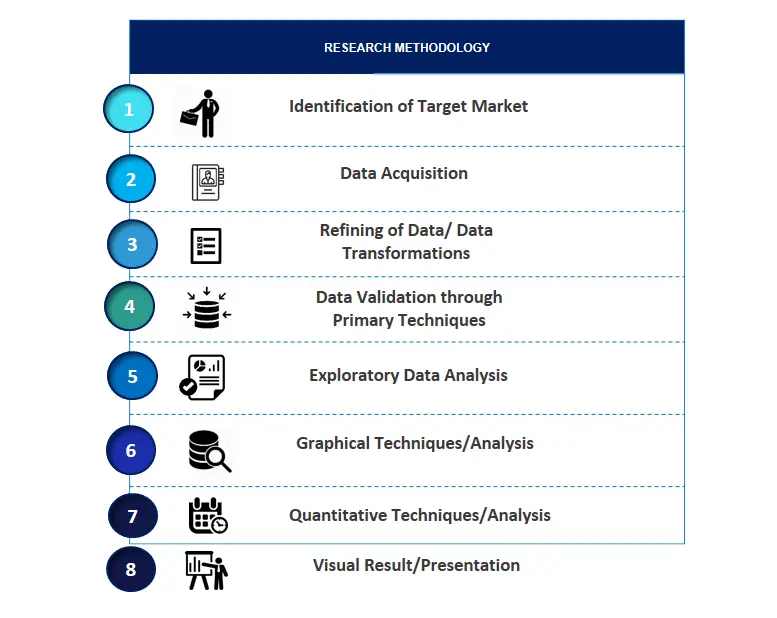
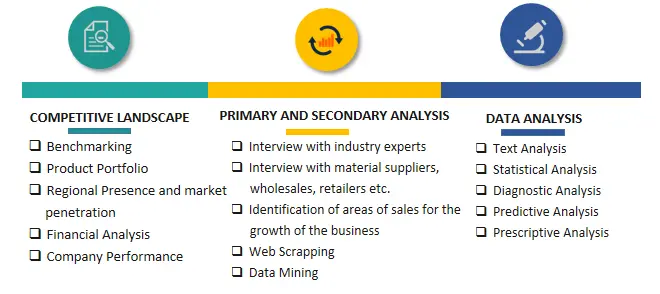

Frequently Asked Questions About This Report
PLACE AN ORDER
Year End Discount
Sample Report
Pre-Purchase Inquiry
NEED CUSTOMIZATION?
Request CustomizationCALL OR EMAIL US
100% Secure Payment
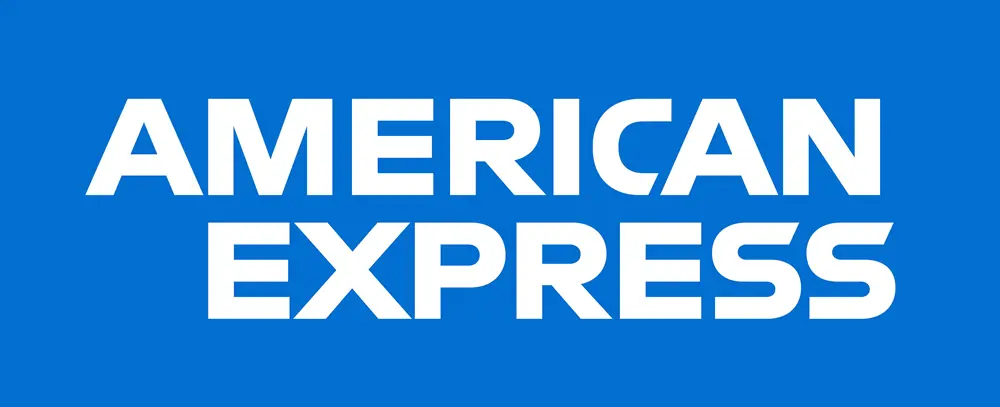
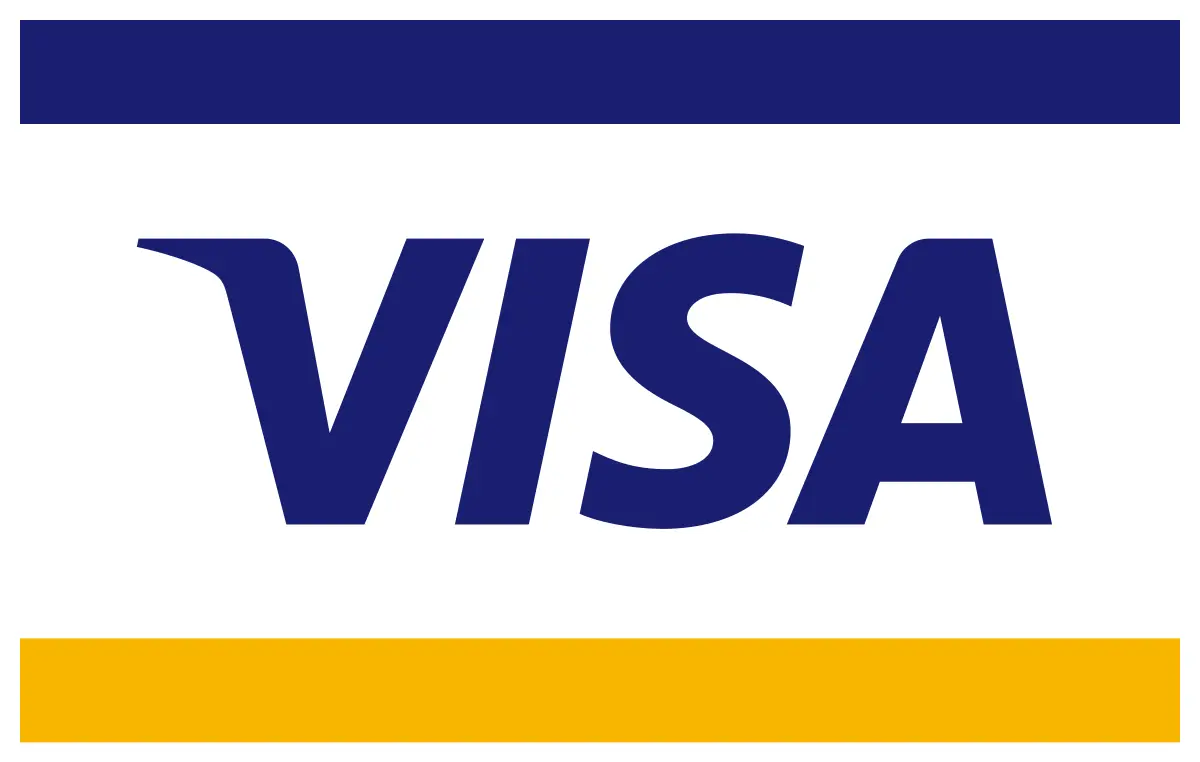




Related Reports
Our Global Clients
Our data-driven insights have influenced the strategy of 200+ reputed companies across the globe.

